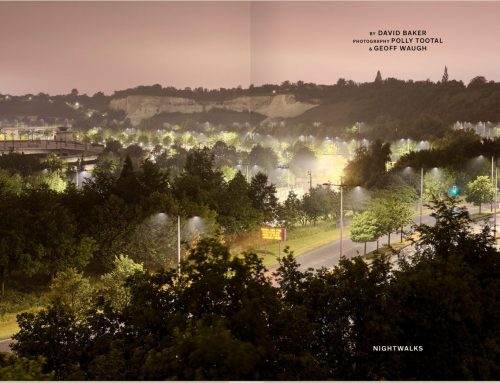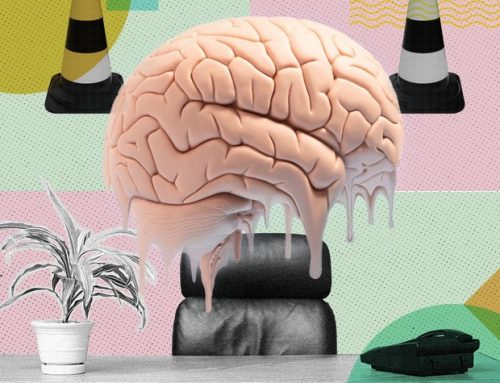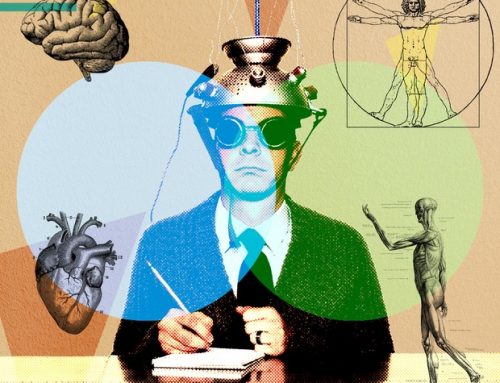Bicycles are cheap, healthy and good for the environment. So why do so many motorists hate them?
Financial Times, 20 November 2004
The bicycle is making a comeback. Every weekday morning nearly 200,000 people cycle to work in London, up 23 per cent on last year’s figures and, according to Transport for London, still rising. Ten million of us across the UK cycle at least once a week. Employers are starting to provide showers and changing facilities to encourage people to leave their cars at home. Cycling’s image, once uncomfortably located somewhere between scruffy paper boys and John Major’s spinster on her way to evensong, is broadening to encompass even the most style-conscious senior manager. And this month Sustrans, the Bristol-based charity behind the UK’s National Cycle Network, was voted the nation’s favourite national lottery beneficiary.
Few could doubt that, as a means of transport, the bicycle is hard to beat. It is cheap, simple, gives off no emissions and is virtually silent. For short distances through cities it is easily the fastest means of getting from A to B. It takes up one eighth of the road space of a car, helping reduce congestion. Parking is free and easy. And riding a bike is excellent aerobic exercise.
“The message we have to get over,” says Tom Bogdanowicz, campaigns and development manager at the pressure group London Cycling Campaign, “is that there are benefits for everybody from people cycling: more parking spaces, less pollution, less congestion, less drain on NHS. Other people gain.”
But not everyone is so thrilled with this two-wheeled renaissance. According to The Highway Code, which sells half a million copies a year, each of which is probably read once, cyclists have equal rights to the road. The reality on the streets, however, can be very different. Cyclists often find their journeys punctuated by a series of near misses: cars making sharp left turns in front of them; car doors opening unexpectedly and threatening to throw them into the traffic; drivers on mobile phones clipping them with their wing mirrors. “It is a series of frustrations and annoyances caused by the idiocy of drivers,” says James, who cycles regularly to work through central London. “Sometimes I wish I had a spike on the side of my gloves, which I could scrape down the side of their cars as they cut me up once again.”
Despite what many cyclists will tell you, most drivers aren’t actually out to push cyclists off the road. It’s just that they don’t think they should be there in the first place.
“The majority of drivers are not actively aggressive towards cyclists,” says Stuart Reid, head of the sustainable transport unit at TRL, the transport consultancy, and co-author of a government- sponsored study into motorists’ attitudes to cyclists. “The relationship is more complex than that. There is a sense in which drivers don’t think cyclists are as legitimate users of the road as other drivers. They see them as lower down the pecking order. Drivers will tend to take the worst examples of cycling behaviour they have experienced and extrapolate them to all cyclists.”
In 2002, Reid and his colleagues interviewed 620 motorists about their attitudes to other road users. The most common complaint they heard was that, with roads becoming more congested, “inconsiderate driving”, such as failing to signal or not behaving courteously, simply added to the stress of getting around. Among many sinners on the road were those they saw as travelling too slowly, such as elderly or learner drivers – though for some “unac-some, unacceptably slow” meant driving within the speed limit – and this, naturally enough, included anyone on two wheels without an engine.
“There is a strong anxiety among drivers about holding other drivers up,” says Reid. “When drivers encounter something moving slowly, a pedestrian, say, or a cyclist, they experience a certain amount of stress and they don’t feel the user deserves to be on the road. When you come up behind a cyclist you are nervous. You don’t want to slow other motorists down and you are nervous the cyclist will do something unpredictable. Your reaction is to get round the problem and forget it.”
Reid’s respondents felt that, whatever The Highway Code might say, there was a de facto hierarchy on the roads, with larger, faster vehicles warranting more respect than smaller, slower ones. Cyclists came at the bottom of this heap. (For these drivers, pedestrians simply didn’t feature, not being seen as “true” road users.) In fact, says Reid, “the cyclists rated by motorists as ‘most considerate’ were those who rode on the pavement”.
Of course cyclists have brought much of this opprobrium on themselves. Set off on a car journey through many of Britain’s cities and you can be stunned at the kind of behaviour you see on two wheels. Cyclists often cruise through red lights, ignoring both the traffic coming from the other direction and pedestrians trying to cross the road. It’s not uncommon to find cyclists going the wrong way down one-way streets and many seem physically incapable of pushing their bikes along the pavement. And, to the annoyance of many a driver, they seem to do all of this with impunity, free from the need to have a licence, insurance or even functioning brakes. Is it any surprise that drivers feel resentful?
It is Friday lunchtime in a cafe near London’s King’s Cross station. This is black-cab land and the tables are packed with cabbies tucking into the cafe’s renowned fish and chips and bemoaning the state of London’s roads. Michael Cassidy has just finished a morning’s work and he and his three colleagues are happy to give their opinion on the two-wheeled menace. Their initial response is perhaps predictable (“They are a total, utter pain in the arse”) but when pushed they agree cyclists are a good thing for London, especially as they reduce congestion. The trouble comes when cyclists see themselves as somehow outside the law.
“You see it every day,” says Cassidy’s colleague Chris Cole. “Cyclists shooting the wrong way down one-way streets, going through red lights, endangering pedestrians. They come on the inside of you where you can’t see them and cause you to swerve. And they don’t have a licence or insurance so they just cause accidents and then bugger off.”
Handily, the cafe is on the corner of a busy junction and from where we are sitting we have an excellent view of London’s road users in action. Right on cue, as if Cole had brought with him a visual aid, a cycle courier approaches a red light, pauses momentarily and then pedals on, weaving around the traffic and off into the distance. The four cabbies gleefully slap the table, point proven, until a black cab pulls up at a red light just outside the window and stops square in the middle of the green box clearly marked for cyclists only. I ask them if they would do that too (stopping in a cycle box is illegal and can land you a Pounds 100 fine). They’re jovial, but evasive. “Depends if there was anyone in the way,” says Cole.
Cyclists often cite motorists’ misdemeanours as a reason to break the rules themselves. Until there is a level playing field on the road, they say, the only way to survive is to break the rules yourself. Why shouldn’t I go through a red light, the argument goes, if the alternative is being knocked down by an inattentive driver? Besides, in any collision with a vehicle the cyclist is likely to come off far worse, so why not give us a little leeway when it comes to the law?
It only takes a moment’s thought to see how this argument fails. First, misdemeanours by cyclists are not always victimless. Every cyclist on the pavement means pedestrians’ having to get out of the way. And, if a collision occurred, few motorists could live with the idea that they had injured or killed another human being, even if it were no fault of their own. Besides, whatever bad cyclists say, bad road use tends to make matters worse.
“I hate it when cyclists go through red lights,” says Mike Pugh, who rides regularly in London. “If you want to be respected as a road user you have to obey the rules. I would love to ride without stopping of course, but there are other road users crossing my route. Going through red lights just winds motorists up. I have been riding in London for 15 years and I have had one accident and that was with another cyclist. Cyclists need a hell of a lot more training. It is a skill to ride on the road and most are riding around with no idea what they are doing.”
Bogdanowicz agrees. “Cycle training is crucial for both young people and adults,” he says, “how to ride more safely and how to be educated about behaviour on the road. Roads are getting more crowded. Training recognises that there are different skills in traffic. It gives you the confidence to integrate with traffic and minimise conflict.”
One small organisation in south London is rising to that challenge. For six years, Cycle Training UK has been pioneering a more assertive and integrated way for cyclists to use the road – and its approach will come as a surprise to anyone brought up in the old Cycling Proficiency school of cycling in the gutter and hoping that the traffic will zoom past and ignore you.
“Anyone can cycle,” says David Dansky, one of Cycle Training’s lead instructors. “It’s safe and it’s even safer if you train. The three principles we advocate are see, be seen and communicate; and position yourself so you can do all three.”
Cycle Training’s attitude is that if the road is too narrow for a car and a bicycle to share, the cyclist should position themselves directly in front of the car behind, taking the lane. “Then the driver in the car behind would have to make a proper overtaking manoeuvre to get round you and won’t be able to squeeze past, which is what often happens if you cycle in the gutter.”
It’s an appealing theory but the proof, of course, is in the execution, so on a sunny morning, I set off with Dansky on a couple of bikes in convoy into some of the busiest traffic London can offer. Our route north over Lambeth Bridge, round Parliament Square and back across Westminster Bridge is hardly cycle-friendly, but that’s the point. Dansky is passionate about cyclists’ taking their rightful place in the road and if that means sharing it with central London traffic then so be it.
At first it is incredibly nerve-wracking to have cars directly behind you, but soon you realise you are moving easily with the flow of traffic and that it is much easier to communicate with other drivers when you are in among them. As we cycle on, I feel for the first time as a cyclist like a bona fide user of the road and I can see that car drivers are treating me with a new respect. Astonishingly, they are giving way when I need to change lanes. They acknowledge my presence and slow down to accommodate my speed. No one complains and no one drives too close to me. It is an exhilarating feeling and I realise when we get back to base that I am much less stressed than I would be if I had done my usual trick of hugging the gutter.
Kevin Mayne, director of CTC, the national cycling organisation, talks admiringly of towns such as York, Oxford and Cambridge where there are so many cyclists on the road that car drivers understand how to relate to them. The threshold, he says, comes when cyclists make up about 5 per cent of road traffic (in York it’s more like 20 per cent).
It’s an appealing prospect. Although cyclists now make up about 6 per cent of traffic in central London, for example, especially during the rush hour, taking Greater London as a whole this proportion falls to about 1.5 per cent.
Yet Bogdanowicz is optimistic about increasing the number of cyclists on the capital’s roads.
“Ninety per cent of the roads in London are not main roads,” he says. “With a map and a little thought, you can plan a cycle route that takes you almost entirely through quiet back streets. I always try to find ways of minimising any potential for conflict, choosing a route that is inspiring, peaceful and enjoyable.”
For busier roads, though, Cycle Training’s approach certainly helps. And if the traffic really is intolerable, you can always become a pedestrian and wheel your bike on the pavement until you hit a quiet road again.
There’s no doubt that car drivers need to clean up their act. Taking speed limits down to 20mph in built-up areas will make the roads safer for motorists, cyclists and pedestrians alike. Enforcing the ban on mobile phone use will help drivers become more attentive. And applying the Highway Code more strictly will make many people think twice about engaging in the current bully-boy hierarchy of bigger is better.
But cyclists need to perk up too. Running red lights and bouncing up on to the pavement is unlikely to improve conditions either for them or motorists. More cyclists obeying the rules and showing that they are just like other road users is a far more attractive and safer prospect.
Cycling can transform congested cities – just look at Amsterdam. The trick is to show everyone else that cyclists are legitimate road users. And then we can properly celebrate those who choose a means of transport that really does benefit us all.
WHO POLICES THE ROADS?
Not the police, according to Sue Richards, a campaigner for pedestrians’ rights in Lewes, Sussex. Richards has spent the past 10 years challenging motorists who do unsocial things such as parking on the pavement and her determination in the face of adversity is remarkable.
“In that time,” she says, “I have challenged hundreds of car drivers and I have had two apologies and people moving their car. I have also had lots of rococo abuse.”
Richards’ problem is that, like many regulatory systems, the rules of the road appear to have been divided into those that matter and those that don’t. The difficulty faced by pedestrians, and to a lesser extent cyclists, is that this division has been mostly made by drivers: what they see as “minor” infringements of the law, such as parking on the pavement, are tolerated even though they may be inconvenient or even dangerous to other road users.
Criticising behaviour like this is hard enough when you are part of the “in” group (in this case drivers). Attack it from the outside and you risk being ignored or, worse, attacked yourself. And it takes a brave soul to challenge someone who is behind the wheel of a two-tonne piece of metal, especially if you are sharing the road with them.
One solution is to take the battle off the streets and into the realm of social etiquette. Just as most people nowadays would strongly disapprove of anyone driving while drunk, perhaps the time has come to apply similar pressure to those who break the speed limit, use their mobiles while driving their car or, pace Britain’s eco warriors, run red lights and weave in and out of pedestrians on the pavement.






